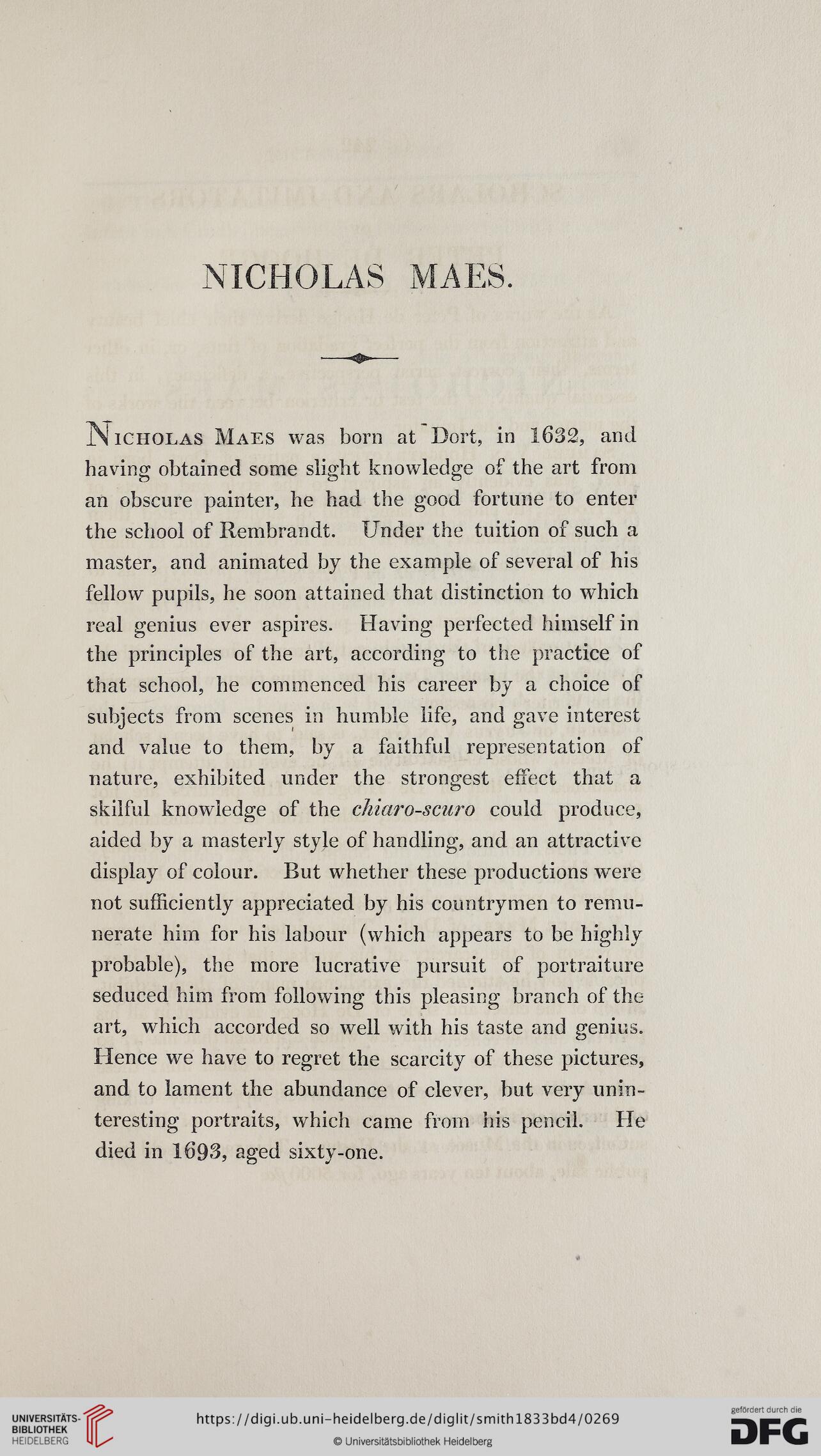NICHOLAS MAES.
Nicholas Maes was born at Bort, in 1632, and
having obtained some slight knowledge of the art from
an obscure painter, he had the good fortune to enter
the school of Rembrandt. Under the tuition of such a
master, and animated by the example of several of his
fellow pupils, he soon attained that distinction to which
real genius ever aspires. Having perfected himself in
the principles of the art, according to the practice of
that school, he commenced his career by a choice of
subjects from scenes in humble life, and gave interest
and value to them, by a faithful representation of
nature, exhibited under the strongest effect that a
skilful knowledge of the chiaroscuro could produce,
aided by a masterly style of handling, and an attractive
display of colour. But whether these productions were
not sufficiently appreciated by his countrymen to remu-
nerate him for his labour (which appears to be highly
probable), the more lucrative pursuit of portraiture
seduced him from following this pleasing branch of the
art, which accorded so well with his taste and genius.
Hence we have to regret the scarcity of these pictures,
and to lament the abundance of clever, but very unin-
teresting portraits, which came from his pencil. He
died in 1693, aged sixty-one.
Nicholas Maes was born at Bort, in 1632, and
having obtained some slight knowledge of the art from
an obscure painter, he had the good fortune to enter
the school of Rembrandt. Under the tuition of such a
master, and animated by the example of several of his
fellow pupils, he soon attained that distinction to which
real genius ever aspires. Having perfected himself in
the principles of the art, according to the practice of
that school, he commenced his career by a choice of
subjects from scenes in humble life, and gave interest
and value to them, by a faithful representation of
nature, exhibited under the strongest effect that a
skilful knowledge of the chiaroscuro could produce,
aided by a masterly style of handling, and an attractive
display of colour. But whether these productions were
not sufficiently appreciated by his countrymen to remu-
nerate him for his labour (which appears to be highly
probable), the more lucrative pursuit of portraiture
seduced him from following this pleasing branch of the
art, which accorded so well with his taste and genius.
Hence we have to regret the scarcity of these pictures,
and to lament the abundance of clever, but very unin-
teresting portraits, which came from his pencil. He
died in 1693, aged sixty-one.




